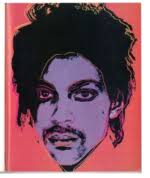Is this the most important copyright case of the year?
- IP News Bulletin
- Jul 16, 2022
- 2 min read
The Andy Warhol Foundation for the Visual Arts Inc. v. Lynn Goldsmith is a case that has been gaining importance for its interpretations and the decisions made on “fair use” and “transformative” work by the US court.
Goldsmith had licensed her 1981 photo of "Prince" to Vanity Fair in 1984. Vanity Fair then commissioned late Andy Warhol to create a print that was based on the photograph. Warhol went on to create a series of prints and pencil sketches that are known famously as the Prince Series, with 14 silkscreen prints and two pencil illustrations.
One of the images was used as a cover-page for an issue of the magazine; after which Goldsmith informed the foundation that she considered the prints to be a copyright infringement. The photograph was registered as an unpublished work; this led to Warhol’s foundation filing a suit against Goldsmith for violating fair use and Goldsmith countersued later.
In 2019, a US District Judge in New York initially ruled that the work was transformative and thus protected by fair use, but this decision was later reversed by the US Court of Appeals of Second Circuit in 2021.
The appellate court stated that Warhol’s work was similar to Goldsmith’s photograph and an imposition of style is not considered to be transformative. The case is now set to be presented in the Supreme Court.
The questions of law that are to be decided in this case are of significant importance to businesses and artists as it takes into consideration the extent to which art can be inspired by another piece of art or creative work and the boundaries beyond which it will be considered as a copyright infringement.
Transformative work was once ascertained if the work in question added a new element to the original, but in the appeal court decision the court concluded that a work would be transformative if it conveyed a new meaning or message. So, following this reasoning, can visually similar works be different if the new work gives an obvious new message?











Comments